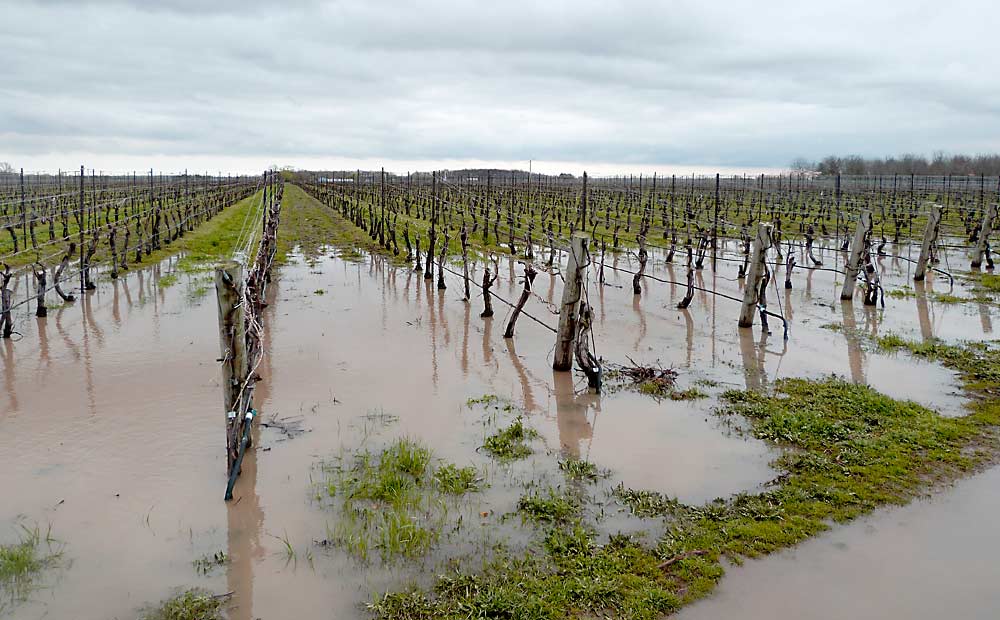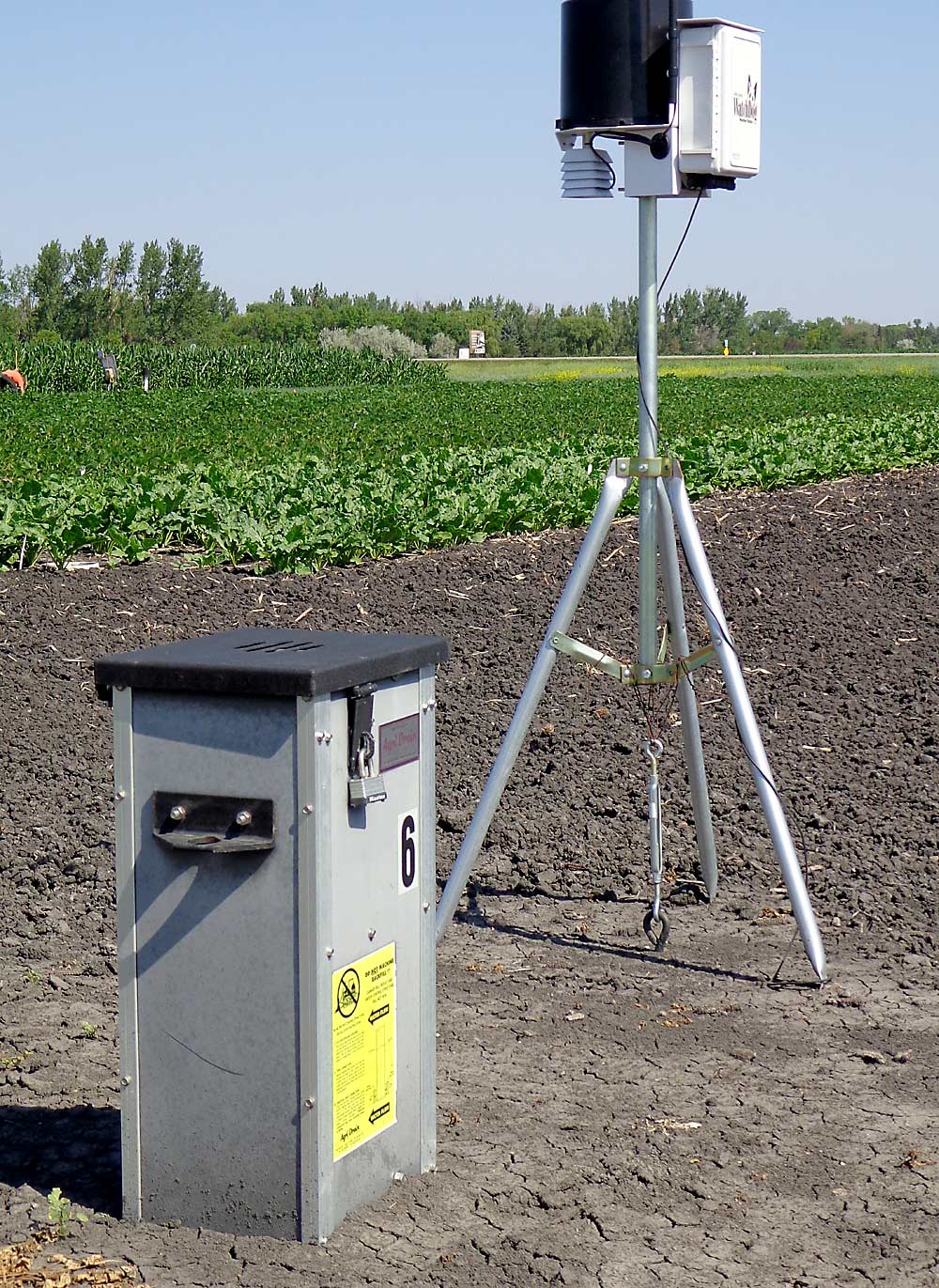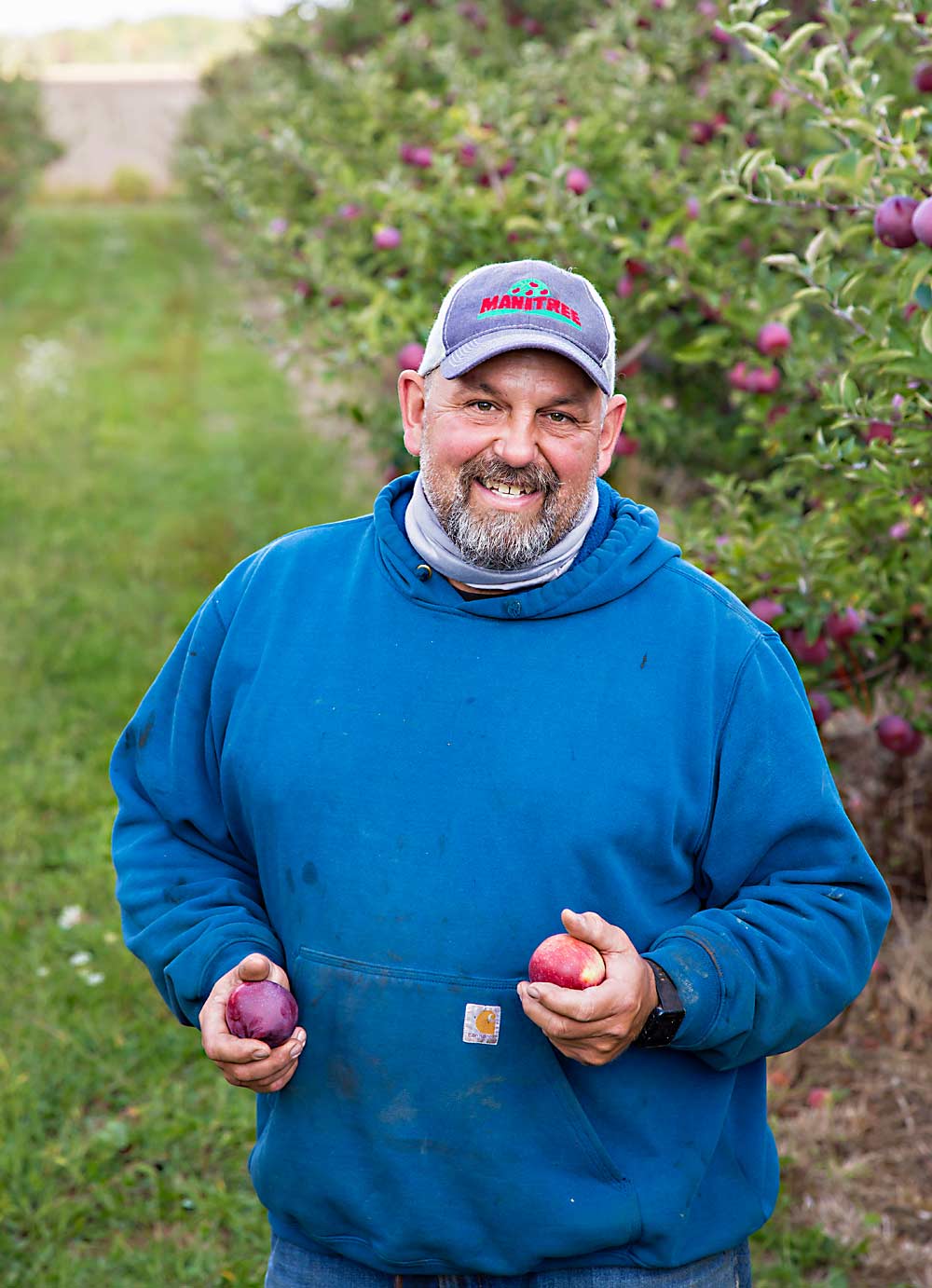
As climate change shifts precipitation patterns, farmers in many regions have found more rain coming in deluges rather than meted out through the season, leading to flooding and erosion followed by periods of drought. At the same time, intensifying mechanization means heavy equipment tamping down soil and causing rutting, both of which also take a toll on the orchard and vineyard floor.
Fortunately, growers have a wide range of long- and short-term options to mitigate flooding, improve hydrology and support smooth farm operations.
Going under cover
“If you’re going to see erosion, the two times you’re most at risk are in the first couple of years of planting a new area or in those transition years when you’re reestablishing an orchard or vineyard,” said Anne Verhallen, soil management specialist for the Ontario Ministry of Agriculture, Food and Rural Affairs. To keep bare and highly susceptible soil from washing away in a downpour, a particular problem on a slope, “the first thing to do is make sure you get a cover crop — a ground cover — in as soon as you can to stabilize that inner row or alley area,” she said.
Anthony O’Geen, soil resources specialist with the University of California Cooperative Extension in Davis, agrees cover crops are a key to fighting erosion. During a high-intensity rain, large and fast-moving droplets are able to detach fine soil particles, and the high volume of rainwater then carries the particles away in surface runoff. Cover crops help prevent that loss by intercepting the raindrops and preventing soil detachment, as well as increasing the surface porosity so more water can infiltrate, decreasing runoff. In addition, cover crop roots anchor the soil.
Growers should be aware that cover crops do require some management. “If they grow tall and aren’t mowed, they can harbor pests, and, more importantly, they can promote frost damage,” O’Geen said. And although cover crops can improve infiltration of water, they do use water themselves, so most California growers terminate the cover crop at some point during the main growing season, to reduce competition for water, he said.
Down the drain
Based on their soil conditions and weather patterns, growers in many regions rely on drain tiles, which are networks of buried, perforated pipes that collect and remove excess water from farmland. The best systems include control boxes to manage the depth of the water table, according to extension agronomist Hans Kandel of the North Dakota State University Department of Plant Sciences.
A control box is a large container, dug into the drain tile network, that is equipped with baffles, which are basically adjustable-height separators that divide the box into two chambers. Drained water generally flows into one end of a control box and begins filling the initial chamber. Once the water rises above the top of the baffles, it begins filling the second chamber and, at that point, the water starts draining out of the control box through an outflow. Once the water level drops back down, outflow stops. “This gives you the opportunity to drain when you need to, and hold some water when you don’t,” Kandel said.

Some enterprising growers have added pumps to their drainage system with control boxes, so they can send the excess water up slopes and fill the tile for use in later irrigation, Kandel said.
“What I have also noticed is that we have maybe the same amount of rainfall through the season, but it comes down in heavy bursts of 2 to 3 inches at a time and is then followed by a drier period, so this type of system with drainage and subirrigation would work for intensive rainfall, as well as those drier times,” Kandel said. “Water is still a resource; you need to think about managing it.”
Ontario grower Brian Rideout has tiled orchards at his Manitree Fruit Farms, which he described as having soil similar to that on the fertile West Michigan area known as the Ridge, where most of Michigan’s apples grow.
“Where I am in southwest Ontario, having your fields tiled is very much a cultural practice,” he said. For the flatter ground, where he has about 140 acres of apples, he has tile set in every other row, or about 24 feet apart. “Our peach orchards and tart cherry orchards are on ground that already drains quite well, so there we have about 30 feet from tile to tile,” he said.
He augments the tiles with French drains, which are set just below the surface in low spots. In addition, Rideout installed 4-inch “tails” of drain pipe that extend from the tile to the surface between trees, so it’s out of the way of mowers or other equipment, and then shaped the ground around them so surface water would drain to the opening of that 4-inch tail. “We tried that because it was cheap, and it works because we have that infrastructure of tiles already,” he said.
A good time to think about adding a new drainage system is before planting a new area or transitioning an orchard, Verhallen said.
“Whether you’re thinking about adding some smaller or larger erosion-control devices, or perhaps doing some sloping of ground in preparation, you should be talking to a drainage contractor and trained erosion-control contractor, and touching base with the local conservation authority or conservation district, and some of the watershed people, because they’ll often have some programs to help offset some of the costs associated with that,” she said.

Getting out of the rut
The shifting rainfall pattern isn’t the only thing causing drainage and erosion concerns.
“It’s not just climate change, but it’s also about how we’re growing, including a lot more mechanization,” Verhallen said. “Mechanical harvesters for vineyard crops, harvest aids for some of these apples, and other things like that, mean that we’re putting a lot more tires and a lot more weight through the orchard, which leads to problems with surface compaction, which means we have a harder time getting water into the soil.”
It also causes considerably more rutting that not only worsens drainage but can make alleys and especially well-used connector roads impassable.
Rideout said his farm is seeing both compaction and rutting issues. One solution he tried is moving up his cover crop schedule. “We used to wait to sod an orchard until year two, but now we try to get sod down that first summer,” he said. “That’s not for the erosion; it’s more because we’re rutting so badly now because of the heavy rains.”
Two other things are working well against rutting: switching from a single-axle sprayer to a tandem-axle version and adjusting the two pairs of tires so they don’t run in the same track, Rideout said. This gives the tandem-axle sprayer a wider footprint, which yields a much shallower rut and causes far less compaction.
“This has made a huge difference in our orchard,” he said.
He fills any remaining ruts with wood chips, bringing them in off and on during the year. He spreads and smooths the wood chips with a loader.
“We had tried everything to fill ruts, including gravel and going over the top of gravel with topsoil and then resodding it,” he said. “The gravel would just sink into the clay, and the sod would be gone within a year, but the wood chips seem to float. They have really made a big, big difference.”
Check all resources
Verhallen recommends growers consider combinations of all of these methods and take advantage of the many resources available for water management in the coming years. She recommended the Innovative Farmers Association of Ontario’s Compaction Action video series, available at ifao.com/compaction-action, that is full of practical tips. But no matter where growers pull new ideas, it’s important to look for solutions that work in their orchards and vineyards. “The idea is to plan in advance,” she said. •
—by Leslie Mertz






Leave A Comment